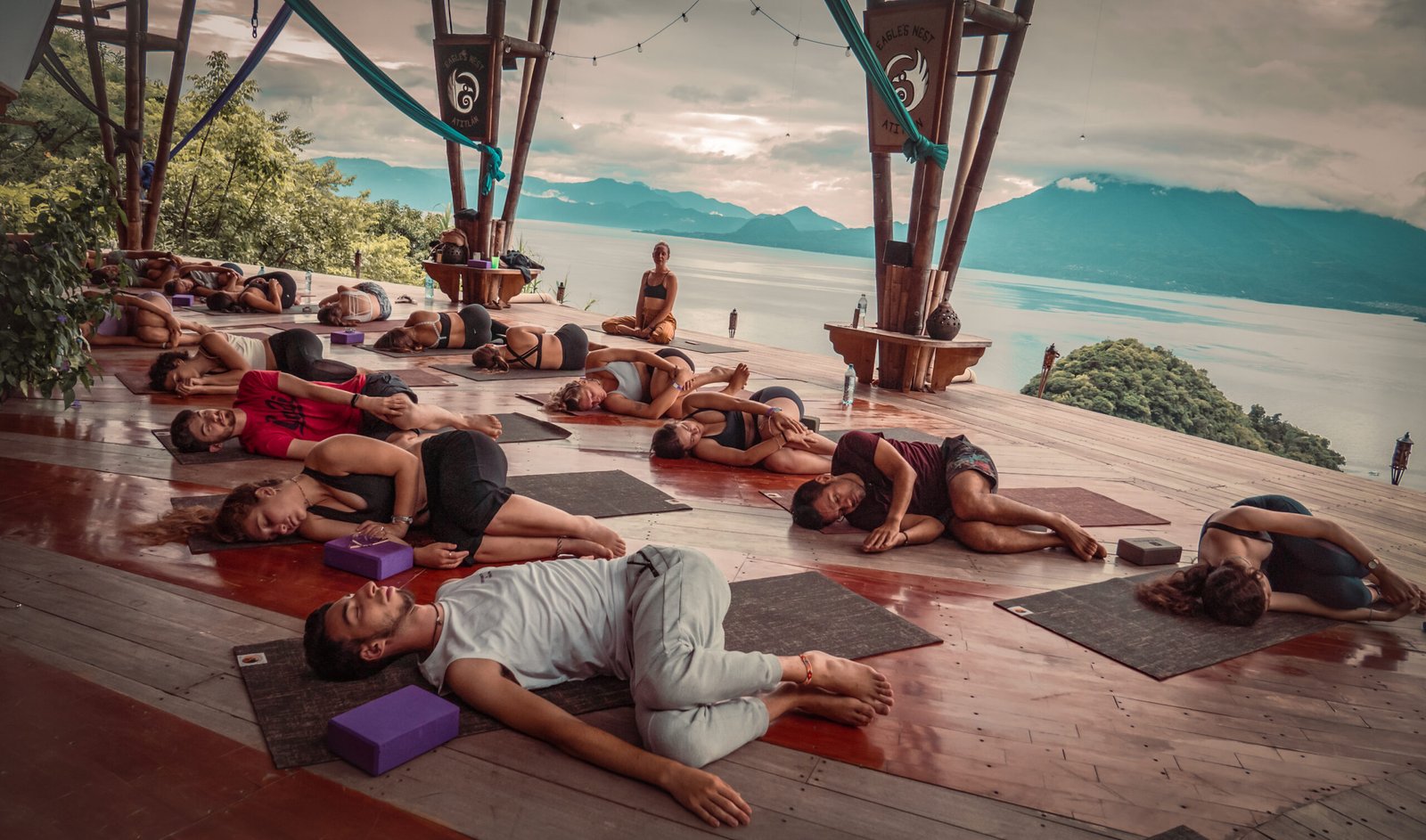What is Yin Yoga? Exploring the Deep Benefits of This Gentle and Healing Practice
In today’s fast-paced world, it’s crucial to find ways to slow down and care for our bodies and minds. One method is to practice yin yoga, a gentle and meditative form of yoga that focuses on stretching and lengthening the body’s connective tissues.
Yin yoga, as opposed to other styles of yoga that involve flowing through sequences of poses, requires holding each pose for several minutes, allowing the body to relax and release tension. Despite its slow pace and low effort, it offers tremendous benefits for the body and soul that many practioners are not fully aware of.
In this article we’ll shed light on what yin yoga is and the hidden benefits it can bring to your life.
What is Yin Yoga?
Yin yoga is a gentle, meditative kind of yoga that is becoming more and more well-liked worldwide. Focus is placed on deep stretching, mindfulness, and relaxation. Yin yoga includes holding poses for a number of minutes at a time to stretch and open the body’s connective tissues, ligaments, and joints. It is a passive practice, which means that there is no active engagement of the muscles. Yin yoga therefore builds the perfect counterbalance to other yang styles of yoga, such as Hatha or Vinyasa, that emphasize dynamic movement and active postures.
Origins of Yin Yoga
Yin yoga was developed in the 1970s by martial arts expert and yoga teacher Paulie Zink and popularized by Paul Grilley and Sarah Powers, who combined traditional Chinese medicine with yoga to create a unique and powerful practice. It is a rather modern form of yoga, compared to its ancient Indian roots, which date back more than 5000 years.
Learn more here: Where did Yoga originate? Tracing the Fascinating Roots of this Timeless Practice
Yin yoga is based on the principles of Yin and Yang, the two complementary energies that make up the universe. Yin represents the receptive and passive energy, while Yang represents the active and dynamic energy. Practicing both forms can promote balance on a physical as well as mental level.
Principles of Yin Yoga
The practice of Yin yoga is characterized by slow, deep stretching, and relaxation. It is a practice that emphasizes holding postures for 3 to 10 minutes, rather than flowing through sequences dynamically. Whereas active forms of yoga stress the yang tissues, such as muscles, the goal of Yin yoga is to stretch and open the body’s connective or yin tissues, such as ligaments, tendons, and fascia.
Yin yoga promotes the use of props, such as blocks, bolsters, and blankets to support the body and allow practitioners to stay in poses for longer periods of time without strain. This allows the body to fully relax into the posture.
However, it can be that stretching bodily areas for a long period of time, though gentle and slow, creates a slight discomfort in your body. This may be noticible as a tingeling sensations in the respective body parts, caused by micro-tiers in the tissues.
It is proven that stressing the tissues of the body for a certain amount of time encourages the body to send more energy to these areas, leading to increased hydration of the tissues. By doing so, Yin yoga can help to improve flexibility, increase circulation, and reduce stress and tension. An increased hydration of your tissues can prevent stiffness and pain in later stages of your life.
But yin yoga offers more benefits for your body and mind that might not be visible at first sight.
Benefits of Yin Yoga
Yin yoga offers numerous benefits for the mind and body. Some of the benefits of Yin yoga include:
- Improved flexibility and range of motion: By focusing on stretching and lengthening the connective tissues in the body, yin yoga can help increase overall flexibility and range of motion.
- Reduced stress and anxiety: The slow, meditative nature of yin yoga can help promote relaxation and reduce stress and anxiety.
- Improved circulation: The gentle stretching and compression of the connective tissues in the body can help improve circulation, reducing the risk of injury and promoting overall health and well-being.
- Greater joint mobility: By focusing on the joints and connective tissues, yin yoga can help improve joint mobility and reduce the risk of injury.
- Increased mindfulness and self-awareness: The meditative nature of yin yoga can help practitioners become more mindful and self-aware, promoting a greater sense of mental and emotional well-being.
The slow and meditative nature of Yin yoga makes it an excellent practice for those who are looking to reduce stress, increase relaxation, and deepen their awareness of their body and mind. Many practitioners report deep emotional release during their practice, as the deep opening of the body promotes release of old tension and physical manifestations of stress. Yin yoga is therefore best practiced in a safe space, where you can allow yourself to fully let go.
You may also like: Unleash the Power of Yoga: 7 Incredible Ways Yoga Transforms Your Body
The Difference between Yin and Restorative Yoga
Restorative yoga is a gentle and relaxing practice that promotes deep relaxation and the release of body tension. Poses are held for an extended period of time, typically between 5 and 20 minutes, with props such as bolsters, blankets, and blocks used to support the body and allow for deep relaxation. The focus of the practice is on activating the parasympathetic nervous system, which allows the body to rest and heal.
As opposed to yin yoga, the focus here is not on creating stress in the tissues, but fully on healing and deep relaxation. Poses are held even longer and focus on maximum comfort and release. In a restorative class, only a few postures are performed and fully supported with blankets, chairs, bolsters or the wall.

Conclusion
Yin yoga is a slow and meditative yoga style that emphasizes deep stretching, mindfulness, and relaxation. It is a practice that is based on the principles of Yin and Yang and involves holding postures for several minutes at a time to stretch and open the body’s connective tissues. By practicing Yin yoga, you can experience numerous benefits for your physical, mental, and emotional well-being. Yin yoga is a great teacher to breathe through the sensation, trust in your body and find comfort in uncomfortable situations.
Is Yin Yoga for you?
If you’re looking for a gentle and accessible practice that can help you reduce stress, improve flexibility, and deepen your awareness of your body and mind, Yin yoga is an excellent choice. Due to its slow and passive nature, it is accessible for all fitness levels. Through the use of props, postures can be modified to suit all kinds of practitioners, from seasoned yogis to complete beginners.
Curious to try out yin yoga? Don’t forget that yoga classes are included in your all-inclusive stay with Eagle’s Nest. Check our schedule and book your class here.




